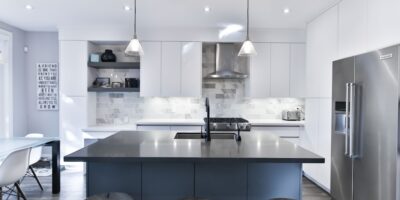Understanding Top Plate Framing in Construction
The concept of top plate framing is a critical aspect of construction, particularly in wood-framed buildings. It provides structural support and stability to the upper portions of a building. Whether you’re planning a new build or renovating, understanding how top plate framing works can be invaluable.
What is a Top Plate?
A top plate is a horizontal structural member located at the top of the wall. In wood framing, it serves as a cap for walls and is usually composed of two layers of wooden boards stacked on top of another. The top-most board is sometimes called the double top plate. It helps distribute weight from the roof and upper floors down to the studs and then to the foundation.
Functions of Top Plates
Top plates perform several essential functions in a building’s framework. Firstly, they serve to distribute loads evenly from the rafters or trusses above. This helps in mitigating stress on individual studs, enhancing overall stability. In seismic zones, they provide additional lateral strength to prevent damage during earthquakes. Secondly, they act as a base for ceiling joists or rafters, ensuring uniformity and proper spacing. Lastly, they help align walls during construction.
Materials Used
Top plates are typically made from softwoods such as pine, fir, or spruce. These materials offer a balance between strength and workability, making them ideal for framing. In high-moisture areas, treated lumber may be used to resist decay and insects. Advanced materials, such as engineered wood products, are also gaining popularity due to their consistency and strength.
Advantages of Engineered Wood
- Consistent quality, with fewer defects than solid wood.
- Higher strength-to-weight ratio.
- Greater resistance to warping and shrinking.
Building Codes and Standards
Building codes dictate the specific requirements for top plate framing. These vary by region but generally address aspects such as size, spacing, and connections. Adhering to these codes ensures structural integrity and safety. In the United States, the International Residential Code (IRC) provides guidelines for wood framing, including specifications for top plates. It stipulates minimum dimensions and necessitates proper nailing and overlapping techniques.
Common Code Requirements
- Minimum thickness and width for top plates.
- Overlap joints by at least 24 inches for the double top plate.
- Use of specified nails, typically 10d common or box nails.
Framing Techniques
Traditional or balloon framing methods utilize top plates differently. In traditional platform framing, walls are constructed on the floor and then raised. The top plates lie on top of the studs and are nailed securely. In balloon framing, long studs extend from the foundation to the roof, with the top plate resting on them to provide a cap.
Platform Framing Steps
- Construct wall sections on a flat surface.
- Attach top plates to studs with nails or screws.
- Raise wall sections into position.
- Secure sections together using overlapping top plates.
Challenges and Considerations
Proper installation of top plates requires skill and precision. Alignment issues can occur if studs are not plumb or if materials are warped. Overcutting or undercutting can compromise stability. Careful measurement and skilled craftsmanship are necessary. Another consideration is the presence of penetrations like pipes or wiring. These can weaken the top plate if not properly reinforced. Builders must also consider thermal expansion, especially in regions with significant temperature changes.
Tips for Avoiding Common Mistakes
- Use a level to ensure precision.
- Double-check measurements before cutting.
- Secure all joints with proper nailing patterns.
Innovations in Top Plate Framing
Recent advancements in construction technology have led to new techniques and materials for top plate framing. Metal connectors, such as tie plates and joist hangers, provide enhanced strength. Prefabricated wall panels with integrated top plates speed up construction. Some builders are experimenting with alternative materials like high-density foam and synthetic composites, which offer insulation benefits alongside structural support.
Sustainable Practices
- Using reclaimed or sustainably sourced wood for top plates.
- Applying low-VOC treatments to prevent decay.
- Incorporating energy-efficient materials.
Conclusion
Understanding top plate framing is essential for anyone involved in construction or renovation. Whether you’re a homeowner, builder, or architect, knowing the role and requirements of top plates can help ensure your projects are safe, durable, and efficient. Paying attention to materials, techniques, and codes is key to successful top plate framing.
“`

Subscribe for Updates
Get the latest articles delivered to your inbox.
We respect your privacy. Unsubscribe anytime.